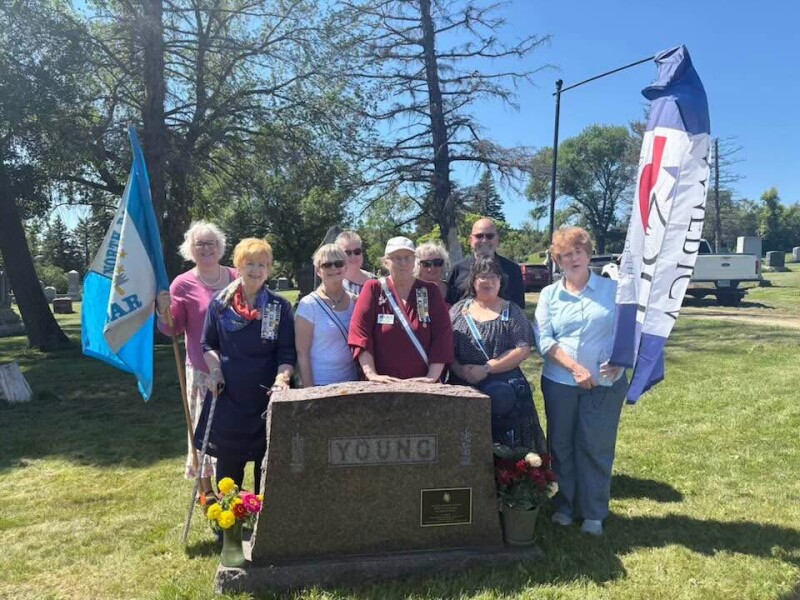Members of the North Dakota chapter of the Daughters of the American Revolution (DAR) gathered on August 22, 2023, in Valley City to honor the legacy of founding member Augusta Freeman Young by dedicating a new grave marker at Woodbine Cemetery. This initiative aimed to restore recognition to Young, who played a pivotal role in establishing the organization in the state over a century ago.
The DAR, founded on October 11, 1890, in Washington, D.C., has a long history of promoting historic preservation, education, and patriotism. While many associate it with traditional social gatherings, the organization has evolved significantly, particularly as America approaches its 250th birthday in 2026. This evolution is reflected in the diverse membership now present in North Dakota, which includes women of various ages and backgrounds.
Young, born in St. Charles, Michigan, in 1871, was instrumental in revitalizing the North Dakota DAR when she joined in 1914. She organized the state’s first chapter, Sakakawea, in Valley City in 1915 and served as its first regent. Under her leadership, the organization grew to over 300 members by 1924. Young passed away in 1949, and her original grave marker was unfortunately damaged by a lawn mower, prompting the recent dedication.
The DAR has a rich history of community service in North Dakota, from placing historical markers to supporting local museums. Their contributions include moving Theodore Roosevelt’s Maltese Cross cabin to what is now Theodore Roosevelt National Park. Current initiatives include sponsoring wreaths at the Fargo National Cemetery, supporting Honor Flights for veterans, and volunteer work at the Veterans Affairs hospital.
An important aspect of the DAR is its nonpartisan stance. While members may hold varying political beliefs, the organization does not endorse any political candidates or parties. Sandy Sidler, honorary state regent, emphasized their commitment to service, stating, “The mission of DAR is service — exactly. That is totally what we do.”
Today’s DAR members reflect a more inclusive community than in prior generations. Sidler noted that the organization actively seeks to recognize patriots beyond the traditional narratives, broadening eligibility criteria to include those who contributed to the war effort in various capacities. This shift allows descendants of African American and Native American patriots to qualify for membership. For instance, the Oneida Nation significantly aided George Washington’s troops during the Revolutionary War, and individuals like Mary Hemings Bell, who was enslaved by Thomas Jefferson, have also been designated as patriots by the DAR.
The transformation of the DAR is underscored by its current membership. With over 190,000 members across the United States and abroad, the organization has surpassed the Sons of the American Revolution, which counts about 38,000 members. Sidler highlighted the organization’s significant assets, including ownership of a block of land in Washington, D.C., purchased when it was still considered unbuildable.
As the DAR looks forward to the nation’s 250th anniversary, the organization plans to offer grants to local communities in North Dakota to commemorate the state’s history. Sidler expressed a desire for greater community involvement, saying, “We want people to be involved in celebrating this anniversary.”
The dedication ceremony in Valley City served as a poignant reminder of the importance of preserving history. By replacing Young’s damaged marker, the members of DAR not only honored her legacy but also reinforced the notion that history can be revived through care and commitment. Their actions underscore the organization’s dedication to service and community engagement, ensuring that the contributions of all patriots are recognized and celebrated.
For more information about membership or programs, interested individuals can visit the national DAR website at www.dar.org.







































































